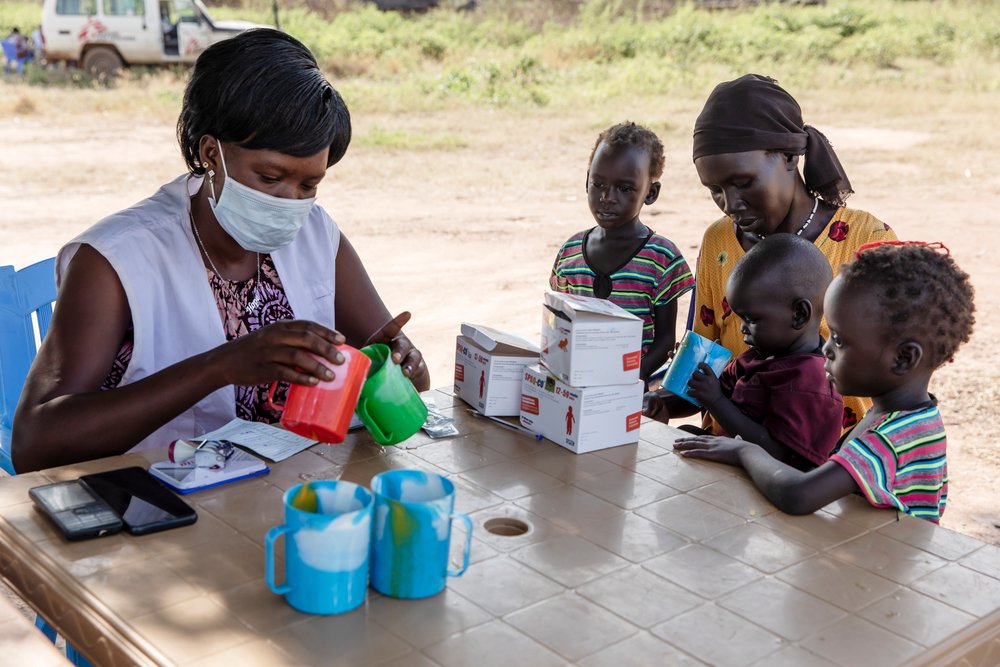Innovation spotlight: Malaria Anticipation Project (MAP)
Despite uncertainties about exactly how climate change will affect malaria, there is little doubt that increased rains and warmer temperatures will affect the geographical range, intensity and seasonality of vector-borne diseases such as malaria.
Against this background, MSF launched the Malaria Anticipation Project (MAP) in 2021. Piloted in Lankien, South Sudan, the project explores whether historical health and climate data can be used to predict the malaria burden. MSF currently tracks the number of malaria cases we see in our facilities in real-time, and so using predictions to identify when and where there could be a rise in malaria cases would help MSF and other actors to plan a more efficient response and potentially reduce malaria-related mortality and morbidity.
In this article, we provide a glimpse into the burgeoning field of anticipatory action in humanitarian work and look closer at the MAP.
What is anticipatory action?
Anticipatory action links early warnings to actions designed to protect communities ahead of a specific event or hazard, such as an unexpected malaria peak. Acting before an event happens is our best chance to reduce morbidity and mortality.
In the context of malaria, anticipatory actions could range from implementing preventive measures such as distributing bed nets, administering preventive chemotherapy (the use of medicines to prevent malaria infections and their consequences) to increasing the clinical capacity to mitigate the risk that health facilities become overwhelmed with malaria patients.
What is the Malaria Anticipation Project (MAP)?
Malaria is a significant public health issue in South Sudan, where the disease is a leading cause of morbidity and mortality in children. MSF has been providing malaria treatment at the hospital in Lankien, located in Jonglei State, for many years.
In Lankien, the Malaria Anticipation Project team has developed and piloted a malaria early warning system which predicts the timing and intensity of malaria peaks. Developed in collaboration with Data Scientists, the system uses mathematical machine learning-based models that have been trained on historical health data from MSF and weather and environmental data from open-access repositories from climate and space agencies.
Complementing the technical tool, the MAP team is working closely with the local community in Lankien to improve their understanding of how different factors may impact malaria transmission:
“You need local knowledge to contextualise what the model is telling you. We know that many environmental factors, for example significant population displacement, can impact malaria transmission. But we often do not have data on these factors, so getting this information from the community is essential,” explains Kim West, Research Manager for the Malaria Anticipation Project.
In addition, insights from members of the local community about health seeking behaviours in the community can help MSF and partners plan a more appropriate response to anticipated malaria peaks.
“You need local knowledge to contextualise what the model is telling you. We know that many environmental factors, for example significant population displacement, can impact malaria transmission. But we often do not have data on these factors, so getting this information from the community is essential.”
What’s next for the project?
Following a successful pilot in 2022, this year is the first when the MAP system is used as part of MSF’s regular operations in Lankien. Predictions always come with a level of uncertainty, and the accuracy of the system and the effectiveness of anticipatory actions informed by its predictions will have to continue to be monitored and evaluated.
Encouraged by the promising preliminary results of the implementation of the tool in MSF’s project work, the team is also exploring possibilities for testing the tool in other areas in the future.

